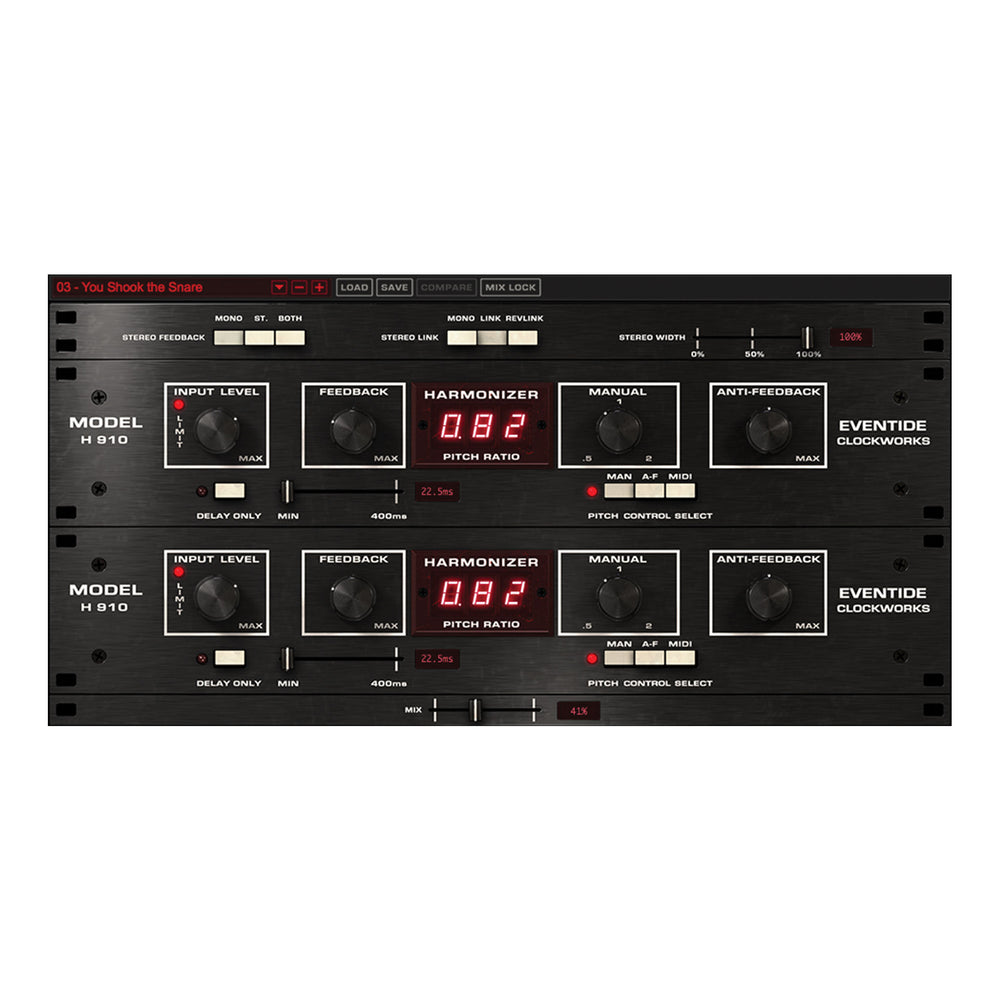

Producer Tony Visconti used the H910 to create the snare sound on David Bowie's album Low (1977), as did Tony Platt on AC/DC's song " Back in Black" (1980). Frank Zappa and Jimmy Page added it to their guitar processing rigs. Speeding up the reruns had increased the pitch of the audio, and the H910 was able to shift that pitch back to where it originally had been. The first H910 customer was New York City's Channel 5, utilizing it to downward pitch shift I Love Lucy reruns that were sped up to create room to run more advertisements. The H910 model number refers to the Beatles song " One After 909".

The production H910 was released in 1975, offering pitch shifting (☑ octave), delay (up to 112.5 ms), feedback regeneration and other features in an easy-to-use box that sold for $1,600. Jon Anderson of the band Yes was among those impressed and became a tester for the first prototype. The pre-production prototype was a hand-wired box topped with a music keyboard controller (which was developed into the HK 941). It was designed by Eventide's first engineer, Tony Agnello (who went on to become the president of Eventide's audio division). The Eventide H910 Harmonizer was first demonstrated to universally positive reactions at the AES show in late 1974. Surprised that moving map displays were not available for small airplanes, he had Eventide develop Argus, the first moving map system, and one of the first multi-function displays designed for general aviation use. Shortly after Eventide moved its offices from Manhattan to New Jersey, its President earned a private airplane pilot's license.

In 2017, Richard Factor was interviewed about Eventide's history on the Gear Club podcast in episodes 6 and 7. Therefore, Eventide began to manufacture and sell HP-compatible RAM expansion boards and did so from the late 1970s to the mid-1990s.
How eventide h910 works upgrade#
After purchasing a Hewlett-Packard computer for researching reverb algorithms and needing to upgrade the memory in order for the computer to handle the necessary complex computations, Eventide designers realized that they could manufacture computer memory expansion far more affordably than the current market price.
How eventide h910 works pro#
Įventide's original product line consisted of two products: the Instant Phaser (the result of an Audio Engineering Society Show appearance and Eventide's first answer to tape-based flanging), and what would become the 1745 Digital Delay Line (the result of a significant order from Maryland Public Broadcasting and the world's first digital pro audio device).īeginning with the 1745M, Eventide began widely using Random-access memory (RAM) chips in many of their products. Other early products included a two-second delay for telephone research and an electrostatic deflector for dispensing nanoliter quantities of chemical reagents. When Katz needed to rewind the analog tape back to a specific point on their Ampex MM1000 multitrack recorder, but limited space in the studio did not allow for a tape op (a person who would operate the tape recorder on behalf of the sound engineer), Katz asked Factor to build a gadget that would do the job, and the resulting device turned into an Original equipment manufacturer (OEM) success for Ampex. The business was founded in the basement of the Sound Exchange, a recording studio located at 265 West 54th Street in New York City and owned by Greene. Eventide was founded by recording engineer Stephen Katz, inventor Richard Factor, and businessman/patent attorney Orville Greene.


 0 kommentar(er)
0 kommentar(er)
